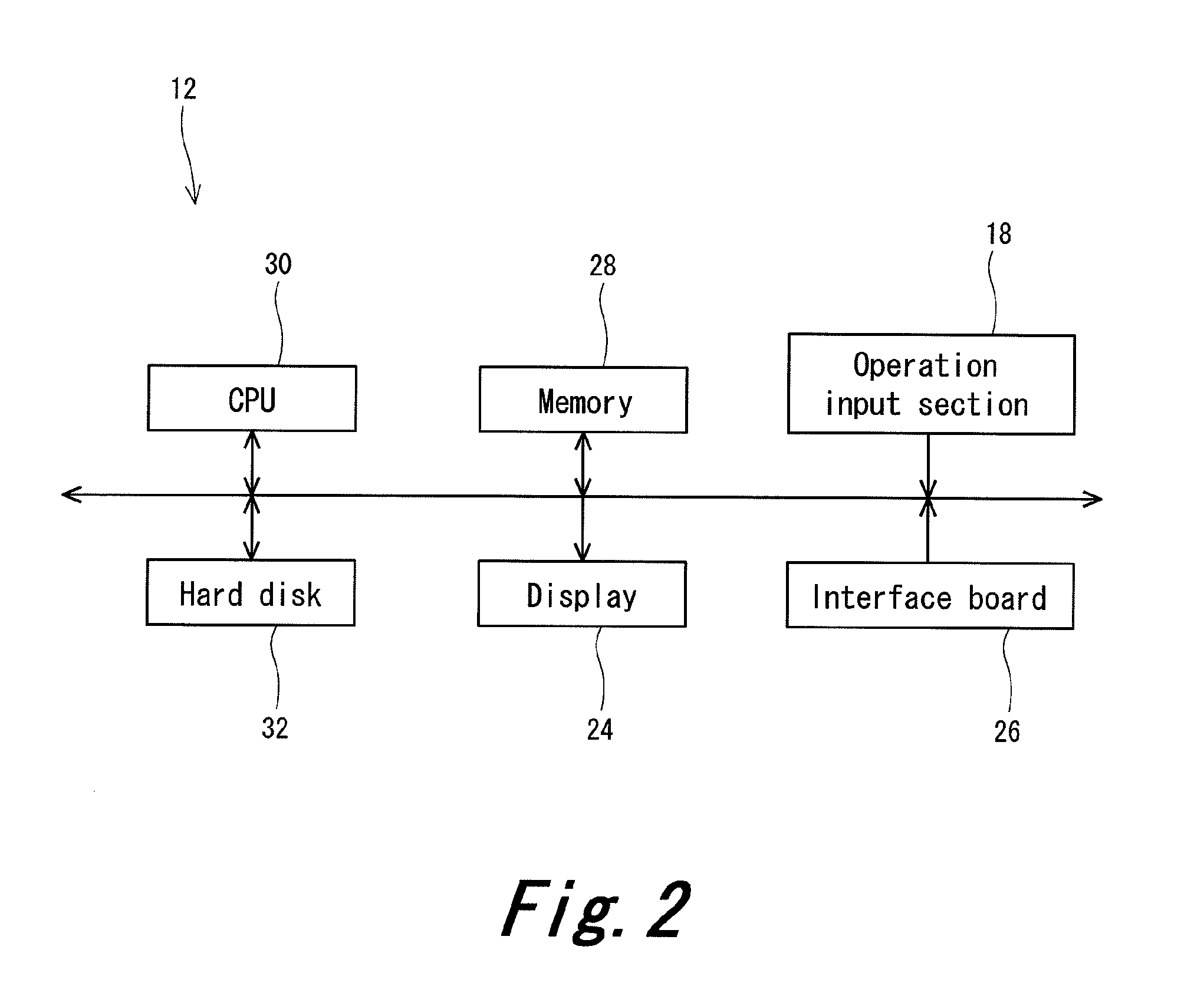Method for fitting golf club
- Summary
- Abstract
- Description
- Claims
- Application Information
AI Technical Summary
Benefits of technology
Problems solved by technology
Method used
Image
Examples
example 1
[0126]Images of swings of 32 golf players were shot. The 32 golf players are advanced golf players whose average score ranges from 72 to 95. The golf players hits 8 balls each with a golf club having a shaft of low flex point, a golf club having a shaft of middle flex point, and a golf club having a shaft of high flex point. An average value of data on the 8 hit balls is used.
[0127]In FIG. 15, a relationship of the flight distance ratio of the ball as the hitting result and the face angle before impact is shown for each flex point rate. Here, the face angle average of the golf club 36 (middle flex point) is made the horizontal axis. The face angle is an angle of the head before impact when viewed from above. The horizontal axis represents an average value of the face angle before impact of every golf player. The average value is obtained from measurement data on swings of the test clubs by each golf player. Here, a value of the shaft physical property of the test club is a middle fl...
example 2
[0132]The measurement data acquired in Example 1 was used. Similar to the fitting method shown in FIG. 8 to FIG. 13, a relational expression F1 which corresponds to the above (Expression 1) was obtained. The relational expression F1 was as per the following (Expression 3):
Y=0.8648·X+40.867 (Expression 3)
[0133]As described above, in the Example 2, a standard shaft flex point Yh is 46%. When a flex point rate of a test club is 46%, the Expression 3 is particularly preferably used. Specifically, when the flex point rate of the test club is 46%, by assigning the measured face angle X into the Expression 3, a flex point rate Y which is preferred for the subject can be obtained precisely.
[0134]Similar to the Expression 2, the Expression 3 was generalized. The generalized expression F4 is as follows: Wherein D1 is a flex point rate of a shaft mounted on a test club.
Y=0.8648·X+40.867+(D1−46) (Expression 4)
[0135]As shown in Expression 4, irrespective of the flex point rate D1 of the test c...
PUM
 Login to View More
Login to View More Abstract
Description
Claims
Application Information
 Login to View More
Login to View More - R&D
- Intellectual Property
- Life Sciences
- Materials
- Tech Scout
- Unparalleled Data Quality
- Higher Quality Content
- 60% Fewer Hallucinations
Browse by: Latest US Patents, China's latest patents, Technical Efficacy Thesaurus, Application Domain, Technology Topic, Popular Technical Reports.
© 2025 PatSnap. All rights reserved.Legal|Privacy policy|Modern Slavery Act Transparency Statement|Sitemap|About US| Contact US: help@patsnap.com



